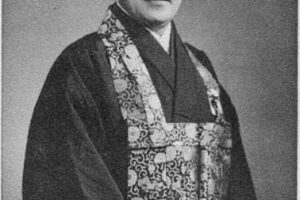COMPARING RATIONALISM, THEISM, AND ZEN
This book is a heartfelt expression of my personal confidence in the demonstrable effectiveness and appropriateness of Zen training for our times. But casual readers and even longtime Zen practitioners may not share my enthusiasm. It pays to exercise a healthy skepticism in matters concerning our deepest aspirations, especially when considering a matter as seemingly alien and strange, novel and foreign, as Zen. But Zen practice begins with a reexamination of the familiar, focusing directly on our own present reality.
Positioning Zen as an alternate social view—against the familiar tenets of scientific rationalism and those of devotional theism—may help to clarify what Zen is by exemplifying what it is not. By placing Zen in the context of conventional or received wisdom, its unique position on the spectrum of options for action may become clearer, its tenets more accessible. The funda- mentals of Buddhism are not like objective scientific hypotheses, theories, or laws. Nor do they qualify as subjective beliefs.
But Zen teachings may be safely regarded as more theoretical than faith based, as they do not conflict with the findings of science. Many teachings of Zen will challenge the familiar belief systems of theism, but some of its general underpinnings, such as that life is a kind of test or challenge to be overcome, are compatible with certain religious doctrines, including those of Abrahamic Judaism, Christianity, and Islam. Zen’s compassionate embrace can accommodate all but the most extreme religious or philosophical viewpoints. Anyone of any faith can usefully practice zazen. Zen is for everyone and is always contemporary, as my teacher would often say.
Zen and zazen partake of both spirituality in its outlook and empirical observation in its method. It occupies a kind of middle ground between extremes of religious fundamentalism on one end and secular reductionism on the other. Thus, Zen offers a middle way for negotiating pitfalls of our current highly polarized culture, a distinct alternative from conventional coping strategies found in Western society. On the spectrum ranging from accepted dictates of rationalism to established beliefs of theism, Zen stands out as a third attitudinal and operational way. My exercise in comparing the three fields examines distinct differences in eight specific dimensions which all three have in common. I have laid out selected examples in a chart for clarity of comparison and contrast. (figure 1)
A caveat: being in no wise an expert on theism nor trained as an exponent of rationalism, my treatment necessarily represents an oversimplification of those two fields. But for the main purpose of placing Zen in its modern context, my relatively superficial survey will suffice.
Of course, this approach is fraught with potential misunderstanding. For example, you may be a devout Christian, a professional scientist, or simply a person who tends to side with one or the other of these two sometimes-opposed world- views. We live in a highly polarized, often fractious, public space these days.
But clarifying Zen is worth risking some conflict and confusion. In its unique design and method, Zen is up to today’s challenges, relying as it does on personal investigation in meditation and bringing the results of that inten- sive research—findings, conclusions, and recommendations—into daily life.
You may find my choice of terms and resultant comparisons between the general tenets of Zen, rationalism, and theism to be unexpected, somewhat inappropriate, and even unwelcome—not the choices you would make. But by contrasting Zen with familiar concepts, however inept or incomplete the comparison, such memes act as foils to show where Zen differs substantially, positioning it in the nexus of contemporary American and Western culture in general. Hopefully.
I hope you will find profiling Zen in this simplified way useful to re- fining your worldview. It should clarify where Zen departs from prevalent cultural approaches and assumptions, especially those of contemporary religion and science, not to mention the political arena. Contrasting with our culture and customs should yield a meaningful perspective on Zen theory and practice for the novice as well as the experienced practitioner.
The new and unfamiliar is best set against the old and familiar if we are to elicit where and how they differ.
In figure 1, eight dimensions selected as archetypal are compared and con- trasted across fields of rationalism, theism, and Zen as worldviews. Comments on rationalism and theism are gleaned from public sources amended by expert collaborators. Those on Zen stem mainly from personal experience.

For the sake of simplicity, we proceed by first addressing general but salient distinctions between the three fields, followed by examining each of the eight dimensions in more detail as they appear to function within each of the three fields of endeavor. Beginning with analyzing the different classes of questions addressed in each, proceeding through central problems identified by their proponents, the various methods employed, and so on, my commentary wraps up with an exemplary conclusion drawn from each field. It goes without saying that any such inventory cannot claim to be exhaustive.









